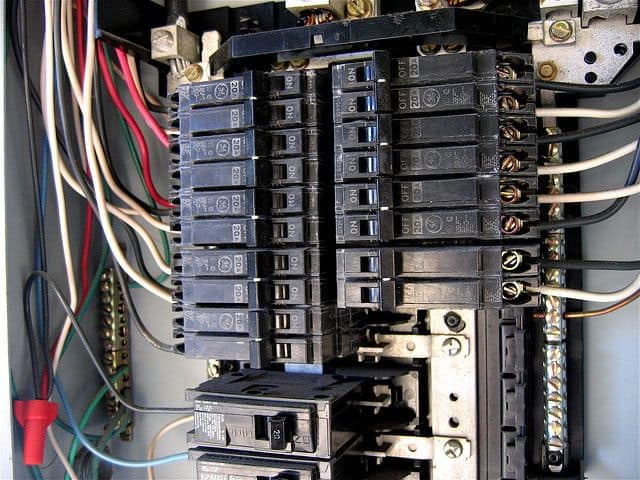What’s Tripping My Circuit Breaker? 4 Possible Causes
As electricity flows through the wiring in your house, circuit breakers serve as critical safety devices that prevent overloads. When too many amps of electricity are pulled into a circuit, both damage and danger result. Wiring can overheat and melt insulation, causing a fire.
A circuit breaker is a more modern, reusable version of a fuse. The breaker constantly monitors the flow of electricity into a circuit, and if for any reason the amperage exceeds the circuit’s rated amount, the breaker trips and the flow of electricity is interrupted at the breaker panel. All outlets on that individual circuit and all devices plugged into it are instantly powerless.
How Much Load Is Too Much?
In a typical residence, circuits in living spaces like bedrooms and family rooms are generally rated for 15 amps. Parts of the home where more amperage is used such as the kitchen or laundry room will be controlled by more heavy-duty circuit breakers rated for 20 amps. Certain high-demand appliances, electric water heaters and central HVAC equipment will typically occupy an individual dedicated circuit and are rated for 30 to 50 amps.
While a tripping breaker is an important safety feature, it can be an annoyance as well, particularly if it happens often. A breaker that trips repeatedly is telling you something important about your home’s electrical circuitry or devices connected to it. Repeated breaker trips should never be simply reset and ignored.
Here are four common causes for a tripped circuit breaker.
Circuit Overload
A circuit overload, which is the most common cause of a breaker trip, occurs when a device plugged into the circuit demands more amperage of electricity than the circuit is rated to supply. This may occur because too many devices are already drawing current on that circuit and the circuit has reached its maximum rated capacity.
The remedy for circuit overload is to re-distribute the load more evenly by plugging some devices into other circuits.
Appliance Issues
Another may occur when a single electrical device draws excessive amps due to an internal malfunction or defect. For example, the electric motor incorporated in an air conditioner compressor may overheat due to internal wear and may pull too many amps. Or a heater or stove that utilizes electric resistance coils to produce heat may begin to cause overloads.
When a single device or component is causing breaker trips, it must be disconnected from the circuit and evaluated to isolate the problem. Repair or replacement of the device is required before it can be plugged back in and utilized safely.
Short Circuiting
A circuit short occurs when an insulated portion of the black “hot” wire physically contacts another black wire or a white neutral wire. This sends a surge of amperage into the circuit that causes the circuit breaker to trip instantaneously.
Short circuits may occur when household wiring degrades due to age and insulation frays or cracks, allowing bare wires to come in contact. Or it may be caused by an internal defect in any device that’s plugged into an outlet on the circuit.
Short circuits should be tracked to their source by looking for any discolored outlets, melted or cracked power cords or any devices that malfunction or emit a smell of burning wire. If obvious external causes can’t be readily identified, the problem is likely within the wiring itself. Leave the breaker switch off and contact a professional electrician to trace the problem.
Ground Fault
A ground fault happens when the hot wire in circuit contact either a ground wire or a grounded metal component such as the metal outlet box. A ground fault is simply another version of a short circuit that causes an electrical overload which triggers the breaker to trip in response.
Pinpointing and correcting a ground fault can be done by a qualified electrician using equipment specifically designed to troubleshoot circuitry.
For more information on circuit breaker issues that affect your home, in Bradenton check out Luminous Electric’s residential electrical repair solutions or call .







